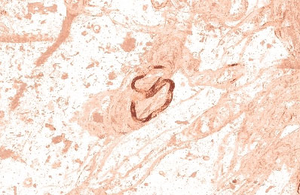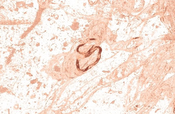Information
- Publication Type: Master Thesis
- Workgroup(s)/Project(s):
- Date: May 2010
- TU Wien Library:
- Diploma Examination: 15. May 2010
- First Supervisor:
- Eduard Gröller
- Markus Hadwiger
- Johanna Beyer
- Eduard Gröller
Abstract
Connectomics is an emerging area of neuroscience that is concerned with understanding the neural algorithms embeded in the neural circuits of the brain by tracking neurons and studying their connections. From all the available scanning technologies only electron microscopy (EM) can provide sufficient scanning resolutions in order to identify neural processes. EM data sets, however, suffer from bad signal-to-noise ratio and artifacts introduced to the data set during the sectioning and digital reconstruction process of the scanned specimen. In this thesis we present two different approaches that generally allow noise and artifact reduction on volumetric data sets and which can be used to increase the visual quality of direct volume renderings (DVRs) of EM data sets. The fist approach we developed was an interactive, on-the-fly filtering framework that allows a user to filter even very large volume data set with resizable 3D filter-kernels. For comparison, we implemented an average, a Gaussian, and a bilateral filter. The second approach we investigated is a semi-automatic one that allows a user to select regions within a data set. Similar regions are then retrieved by our algorithm using multiresolution histograms and the user can remove these regions from the rendering. By selecting and hiding regions containing noise or artifacts, the desired noise- and artifact-reduction can be achieved. We are going to show that both methods we investigated are suitable for removing noise and artifacts in EM data sets.Additional Files and Images
Weblinks
No further information available.BibTeX
@mastersthesis{ritzberger-2010-nar,
title = "Noise and Artifact Reduction in Interactive Volume
Renderings of Electron-Microscopy Data-Sets",
author = "Andreas Ritzberger",
year = "2010",
abstract = "Connectomics is an emerging area of neuroscience that is
concerned with understanding the neural algorithms embeded
in the neural circuits of the brain by tracking neurons and
studying their connections. From all the available scanning
technologies only electron microscopy (EM) can provide
sufficient scanning resolutions in order to identify neural
processes. EM data sets, however, suffer from bad
signal-to-noise ratio and artifacts introduced to the data
set during the sectioning and digital reconstruction process
of the scanned specimen. In this thesis we present two
different approaches that generally allow noise and artifact
reduction on volumetric data sets and which can be used to
increase the visual quality of direct volume renderings
(DVRs) of EM data sets. The fist approach we developed was
an interactive, on-the-fly filtering framework that allows a
user to filter even very large volume data set with
resizable 3D filter-kernels. For comparison, we implemented
an average, a Gaussian, and a bilateral filter. The second
approach we investigated is a semi-automatic one that allows
a user to select regions within a data set. Similar regions
are then retrieved by our algorithm using multiresolution
histograms and the user can remove these regions from the
rendering. By selecting and hiding regions containing noise
or artifacts, the desired noise- and artifact-reduction can
be achieved. We are going to show that both methods we
investigated are suitable for removing noise and artifacts
in EM data sets.",
month = may,
address = "Favoritenstrasse 9-11/E193-02, A-1040 Vienna, Austria",
school = "Institute of Computer Graphics and Algorithms, Vienna
University of Technology ",
URL = "https://www.cg.tuwien.ac.at/research/publications/2010/ritzberger-2010-nar/",
}

 image
image paper
paper

